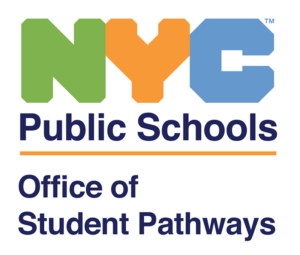Work-Based Learning - Guest Speaker Activity Guide

Guest Speaker Fact Sheet
What Is a Guest Speaker presentation?
Using guest speakers to support learning is a structured Career Awareness activity in which students listen to a presentation to learn about the speaker’s career, business or organization and industry, and ask questions to help them consider whether they might like to pursue a career in the industry.
Designed to meet specific learning outcomes, guest speaker presentations are educationally rich, are tied to the curriculum, and help students connect what they’re learning in school with the workplace. Presentations are usually conducted at the school, but in some cases guest speakers may visit a classroom via Skype, Zoom, WebEx, Microsoft Teams or some other technology; and the activity is conducted through the use of a virtual classroom. There are also virtual simulations available where a recording of a live guest speaker activity can be viewed online and serve as a foundation for an activity and/or discussion in a virtual classroom.
Guest Speaker presentations are designed to:
- Provide exposure to potential careers and jobs.
- Provide a realistic picture of the occupation, business, its role in the community and the career paths and occupations of its workforce.
- Help students make the connection between school and the workplace.
- Inform career planning.
Guest Speaker presentations are structured to:
- Allow students to listen, receive information and ask questions.
- Enable students to begin identifying areas of career interest.
- Build knowledge about the education and training needed for a particular job, career path and entry into the industry.
Guest Speaker presentations are supported by:
- Classroom preparation, including research on the industry and participating businesses.
- Employer orientation and support.
- Opportunities to reflect upon the experience verbally and in writing.
Guest Speaker presentations are connected to:
- Individual career development/training plans.
- Future work-based learning activities.
- The student’s next steps.
Guest speaker presentations are one activity in the continuum of authentic work-based experiences provided to all students engaged in career-related programs or course of study in New York City Public Schools.
Guest Speaker Activities are recognized as a “Zero Hour” Supporting WBL activity by NYSED and the New York City Public Schools.
Required Materials
Implementation Tools
Support Materials

Quick tips for Work-Based Learning Coordinators* to ensure a successful Guest Speaker Presentation
Before
After
Tips for Conducting an Online Guest Speaker Activity
In New York State, this includes certified work-based learning coordinators and others who facilitate, arrange and support work-based learning activities for students.
Sample Timeline
Tips for Success

Guest Speaker Virtual Options
Introduction
Translating a Guest Speaker Activity to virtual settings is perhaps the most straightforward of all the Work-Based Learning activities. While presentations are usually conducted at the school, in some cases guest speakers may visit a classroom via Skype, Zoom, WebEx, Microsoft Teams or some other technology; and the activity is conducted through the use of a virtual classroom. There are also virtual simulations available where a recording of a live guest speaker activity can be viewed on-line and serve as a foundation for an activity and/or discussion in the classroom
Virtual Activity Options
Remember, virtual activities either promote “live” student contact with adult professionals and front-line workers via the use of technology, or are simulations and provide students with employer exposures through recordings, online research and related classroom activities.
Virtual Guest Speaker Options
Virtual Classroom
An industry or employer partner visits a Virtual classroom as a guest speaker and provides a presentation on the speaker’s career, business or organization and industry. Students ask questions to help them consider whether they might like to pursue a career in the industry.
Steps to Success
Guest Speaker Foundational Activity
Identify and select a recorded guest speaker to use as a foundation for an activity and discussion in the classroom.
Have students search the web for recordings of guest speakers and provide a presentation to the class where they show the video and then lead a discussion about the speaker’s career.
- What did they learn?
- What else would they like to know?
- How can they gather more information
Go Hybrid
In some cases it may be possible to arrange for a guest speaker to return to the virtual classroom for a short amount of time to answer specific questions from a new group of students participating in a virtual Guest Speaker activity. If you have recorded the session and are able to have the speaker return set up a convenient time, have students view the Guest Speaker session, start a discussion and then bring the speaker in to answer questions and engage in a dialogue with the students.
